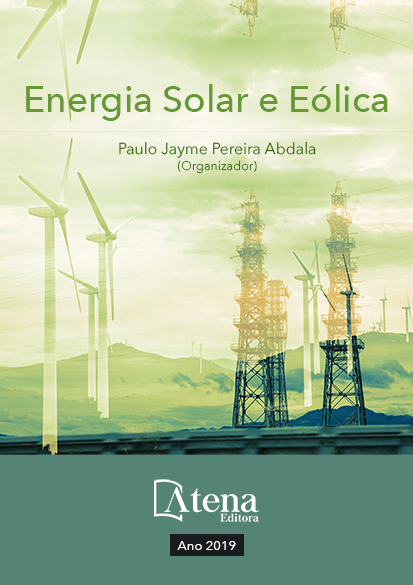
AVALIAÇÃO DA EFICIÊNCIA DO COLETOR SOLAR PLANO ACOPLADO EM SECADOR HÍBRIDO
O coletor solar é o principal
componente de um secador solar, pois atua
diretamente na captação de energia para
o funcionamento do sistema de secagem.
Atuando como fonte de energia primária, o
coletor absorve a radiação solar e a converte
em energia térmica, que é utilizada pelo
secador. Para este tipo de aplicação, o coletor
plano apresenta como vantagens a absorção
direta de energia, a dispensa de dispositivos
mecânicos para mantê-lo perpendicular aos
raios solares e o custo reduzido. Contudo,
algumas variáveis podem afetar o desempenho
de um coletor solar na secagem de produtos,
incluindo as características necessárias ao ar de
entrada na câmara de secagem (temperatura),
o fluxo de massa de ar e quantidade de
energia demandados, além da sua eficiência
instantânea. Objetivou-se neste estudo avaliar
a eficiência do coletor solar de placa plana na
composição de sistema híbrido para secagem
de produtos agrícolas. O trabalho foi conduzido
no outono, utilizando a manga (Mangifera
indica L.) como matéria prima na secagem, que
totalizou 72 h com período de intermitência de
15 h. Durante a secagem, o coletor solar foi
monitorado quanto à temperatura de entrada e
saída, velocidade do ar de secagem e radiação
global. Para as condições experimentais,
obteve-se eficiência instantânea média de
25,9% e máxima de 58,6%. A curva de eficiência
do coletor em função do tempo de secagem
mostrou que os menores valores foram obtidos
no início da manhã, enquanto os picos de
eficiência ocorreram no meio do dia, horários
Energia Solar e Eólica Capítulo 13 195
de maior incidência de radiação.
AVALIAÇÃO DA EFICIÊNCIA DO COLETOR SOLAR PLANO ACOPLADO EM SECADOR HÍBRIDO
-
DOI: 10.22533/at.ed.66719220113
-
Palavras-chave: Desempenho térmico, Eficiência instantânea, Energia solar
-
Keywords: Thermal performance, Instantaneous efficiency, Solar Energy
-
Abstract:
The main component in a solar dryer is the solar collector, which captures
energy directly from the sun to be used by the drying system. Working as a primary energy
source, the collector absorbs the solar radiation and converts it into thermal energy,
which is used by the dryer. Regarding this type of application, the flat plate collector
provides advantages in the direct energy absorption, the dispensing of mechanical
devices to keep it upright to collect solar rays and the reduced cost. However, some
variables can affect the performance of a solar collector in product drying, including the
characteristics necessary for the inlet air of the drying chamber (temperature), air mass
flow and the amount of energy required, besides its instantaneous efficiency. This study
aimed to evaluate the efficiency of a flat plate solar collector in the composition of a
hybrid system applied to agricultural product drying. It was conducted in the autumn
and mango (Mangifera indica L.) was used as the raw material for the drying, which
totaled 72 h with 15 h intermittence periods. During these hours, the solar collector
was monitored according to the inlet and outlet temperature, drying air speed and
global radiation. For the experimental conditions, an average instantaneous efficiency
of 25.9% was obtained, achieving a maximum of 58.6%. The curve of the collector
efficiency as a function of time showed minimal values in the early morning and the
efficiency peaks in the middle of the day, during a period of higher solar radiation
incidence.
-
Número de páginas: 15
- LIZANDRA DA CONCEIÇÃO TEIXEIRA GOMES DE OLIVEIRA


